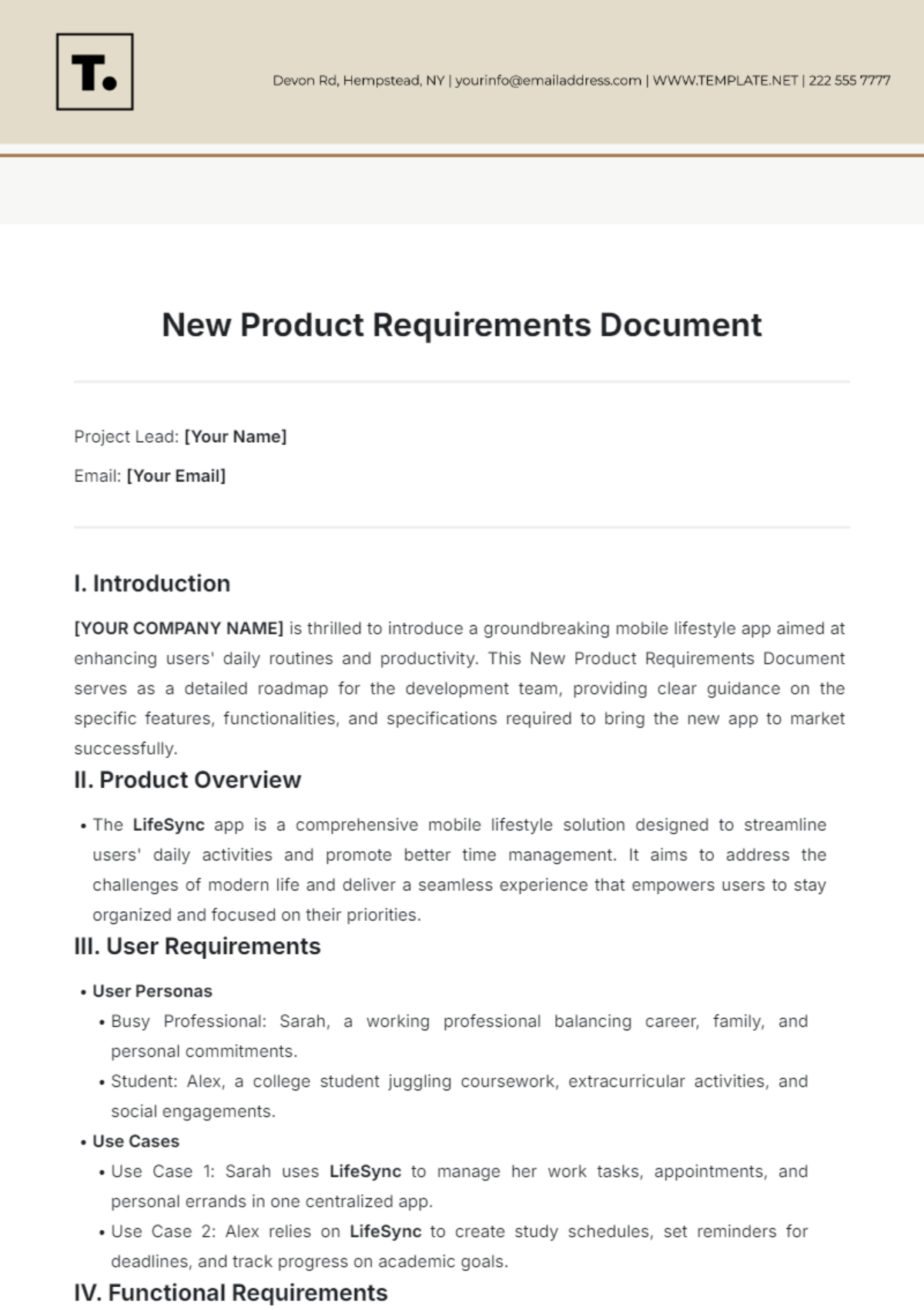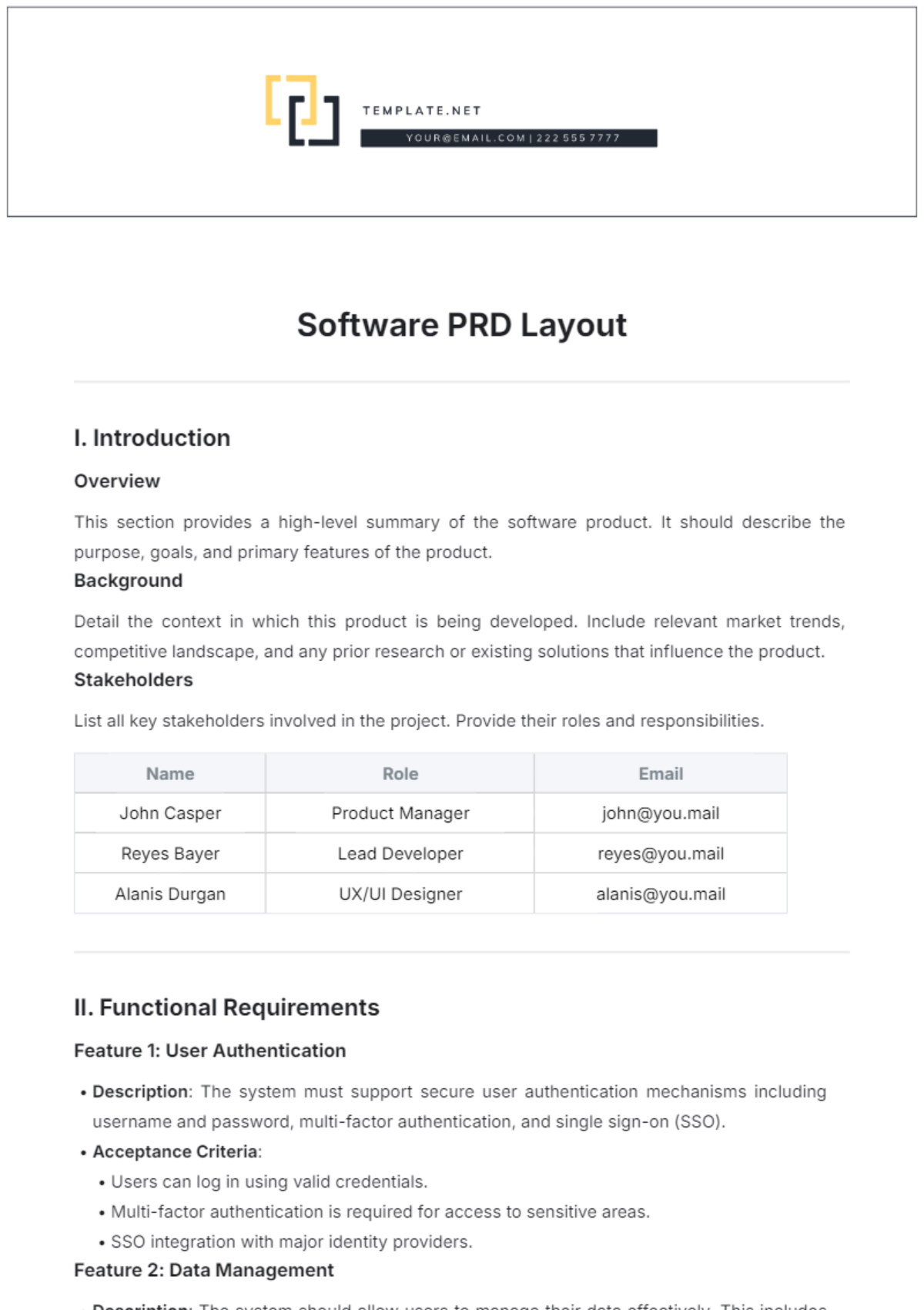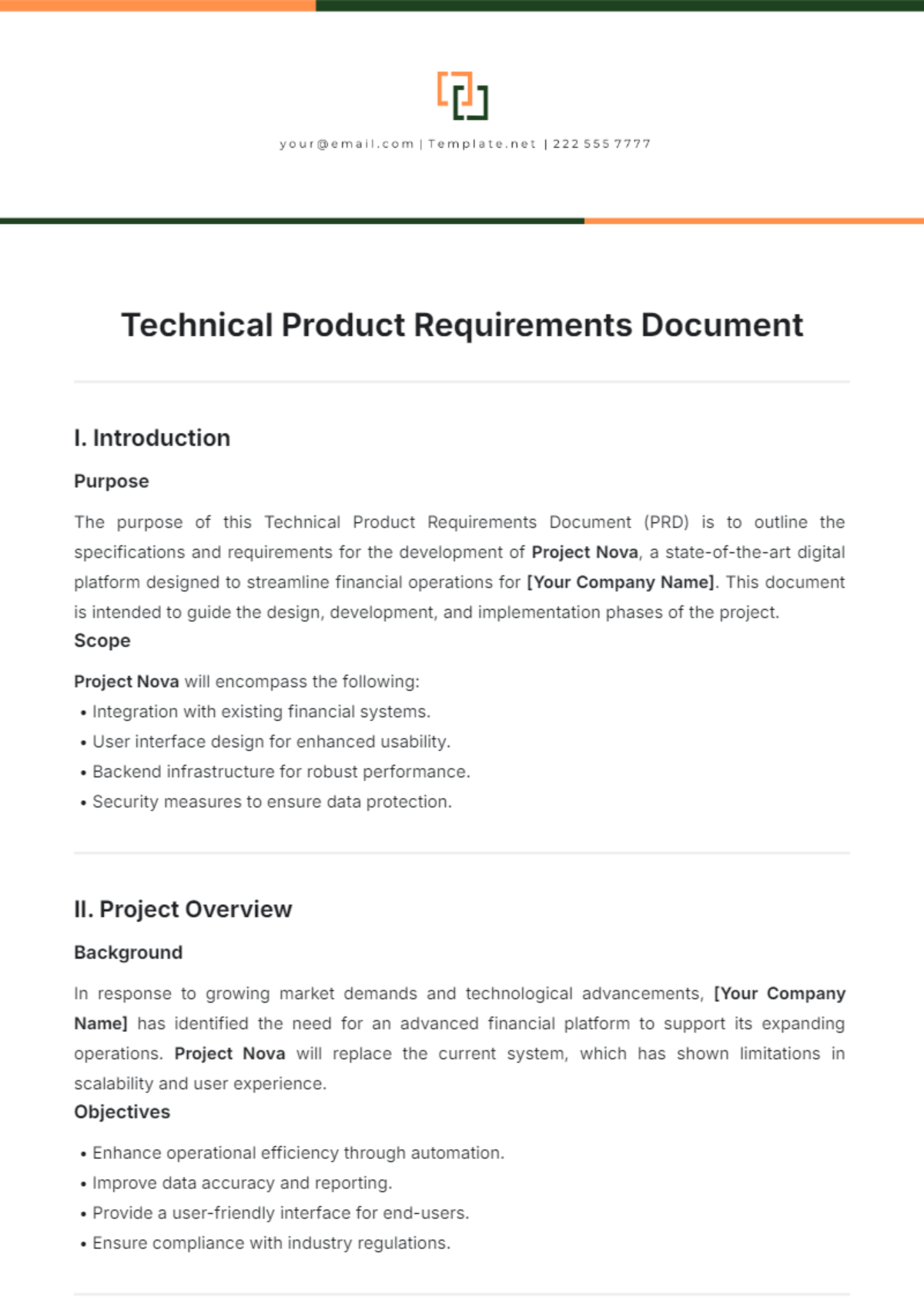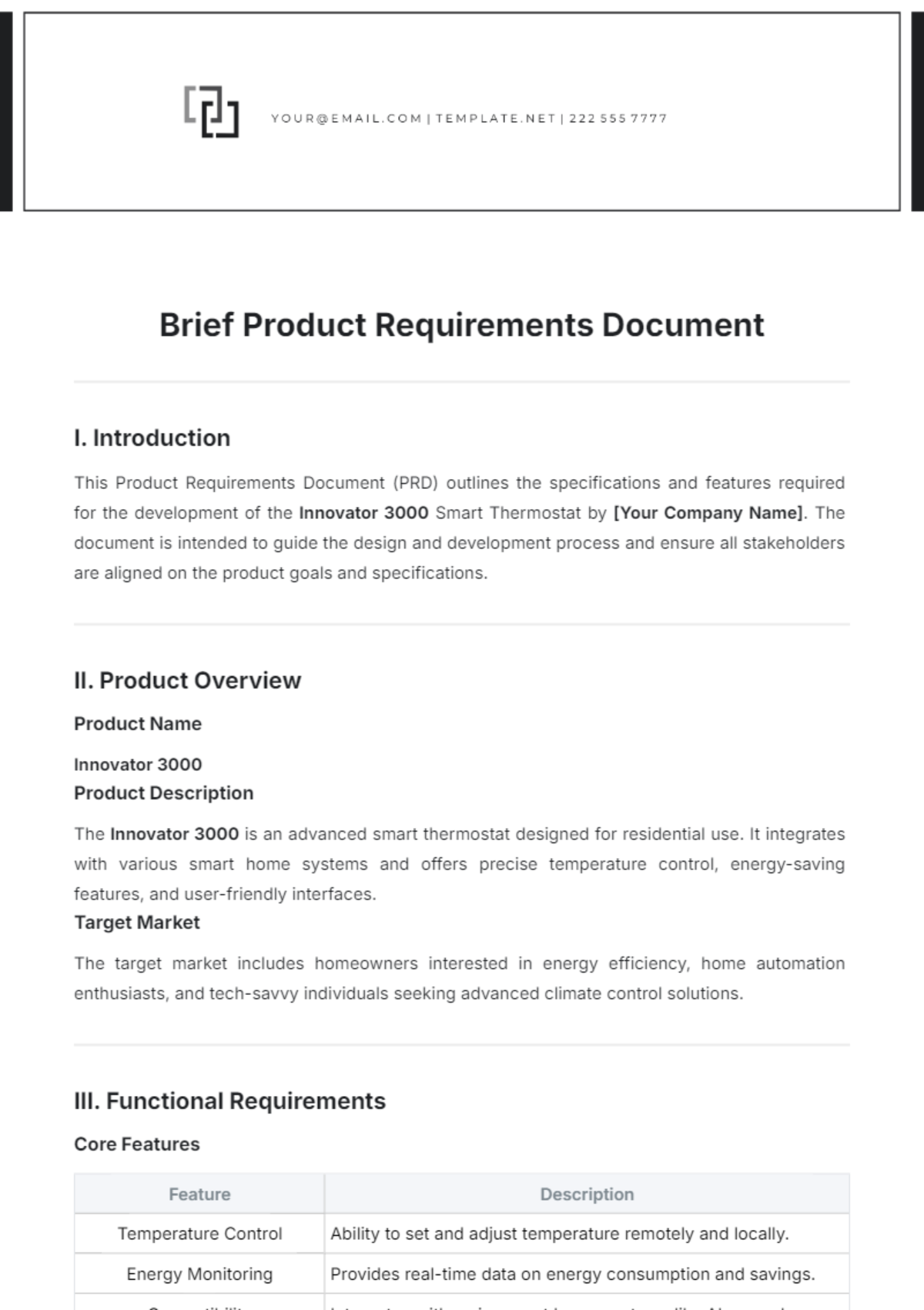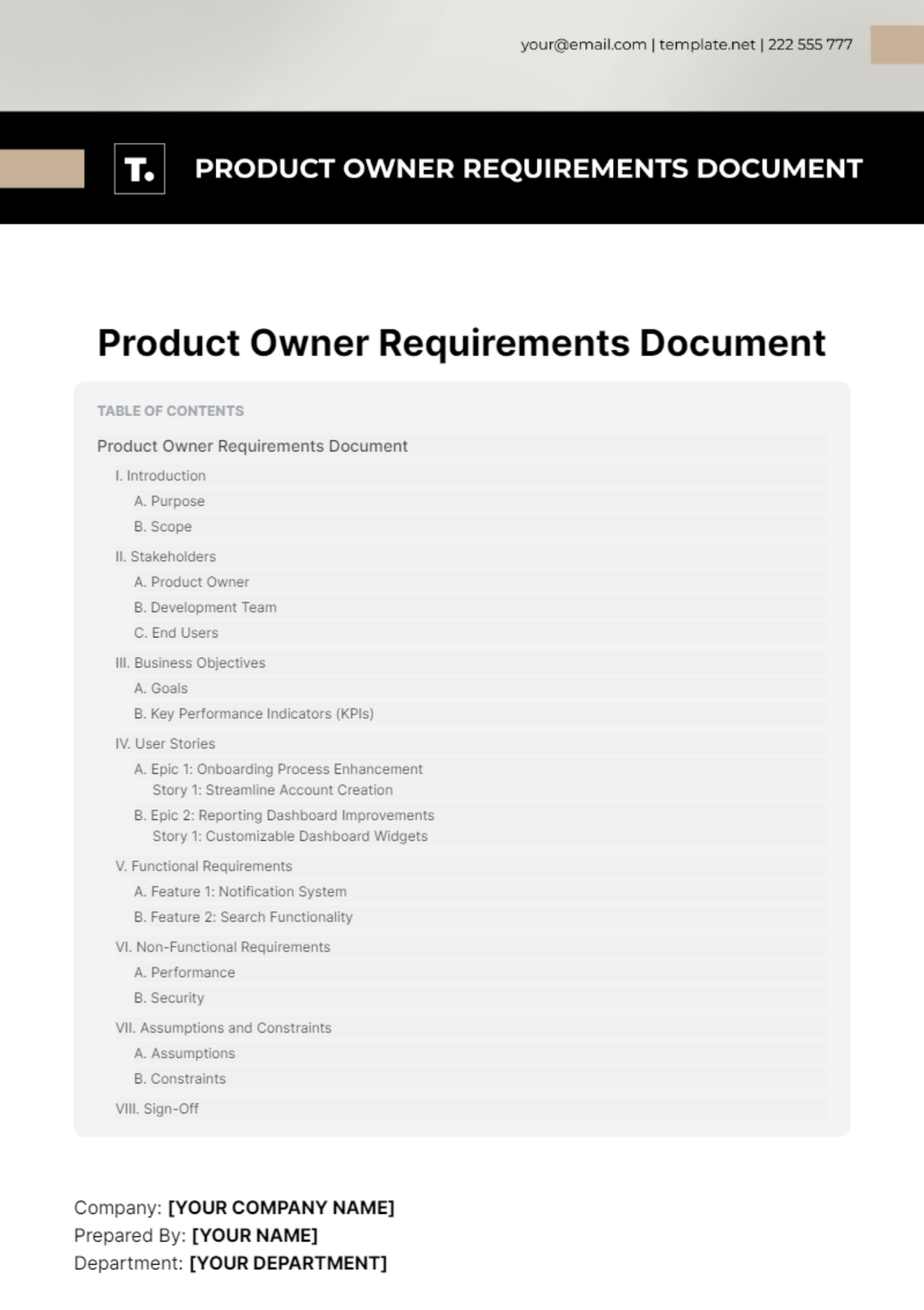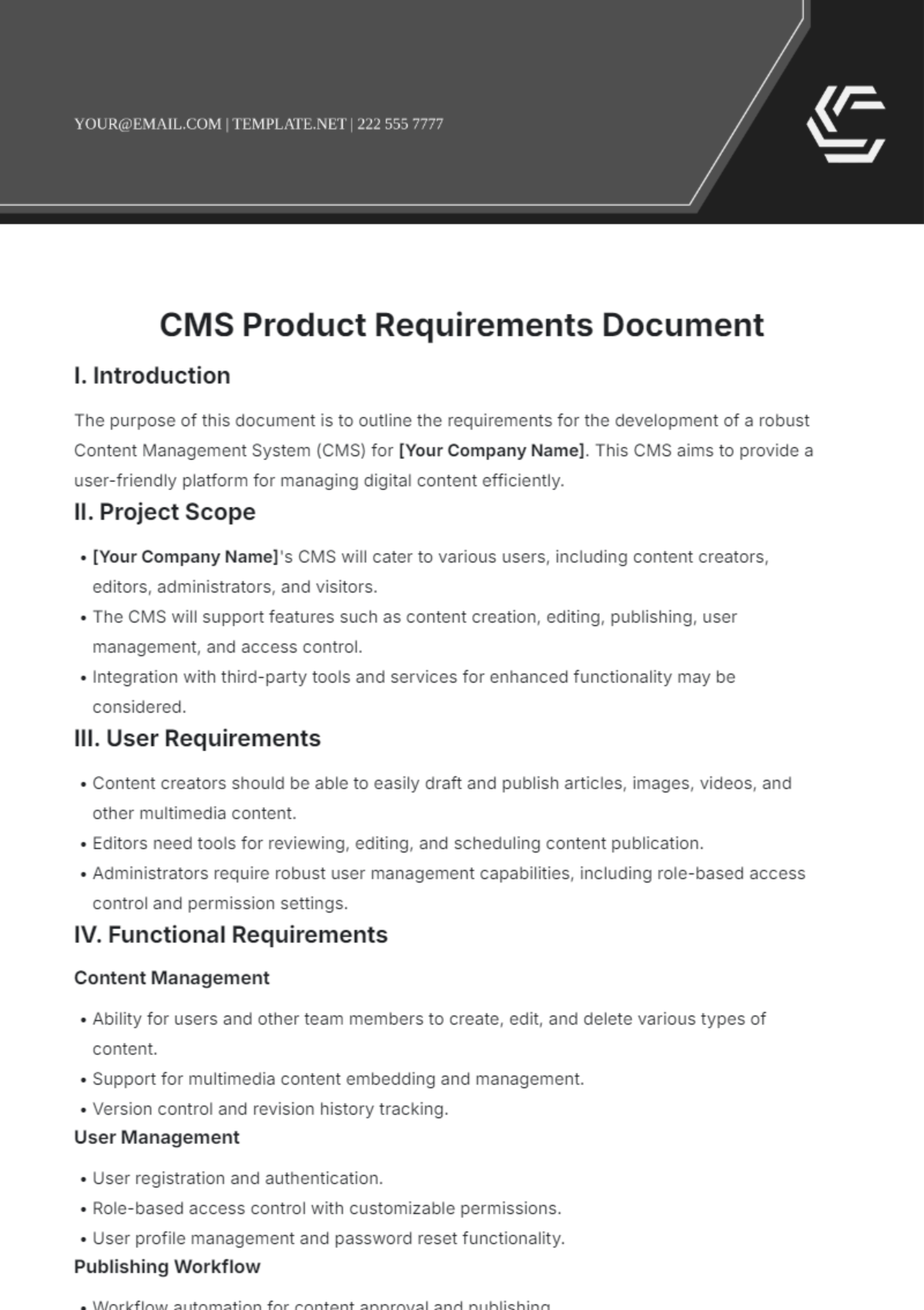CMS Product Requirements Document
I. Introduction
The purpose of this document is to outline the requirements for the development of a robust Content Management System (CMS) for [Your Company Name]. This CMS aims to provide a user-friendly platform for managing digital content efficiently.
II. Project Scope
[Your Company Name]'s CMS will cater to various users, including content creators, editors, administrators, and visitors.
The CMS will support features such as content creation, editing, publishing, user management, and access control.
Integration with third-party tools and services for enhanced functionality may be considered.
III. User Requirements
Content creators should be able to easily draft and publish articles, images, videos, and other multimedia content.
Editors need tools for reviewing, editing, and scheduling content publication.
Administrators require robust user management capabilities, including role-based access control and permission settings.
IV. Functional Requirements
Content Management
Ability for users and other team members to create, edit, and delete various types of content.
Support for multimedia content embedding and management.
Version control and revision history tracking.
User Management
User registration and authentication.
Role-based access control with customizable permissions.
User profile management and password reset functionality.
Publishing Workflow
Workflow automation for content approval and publishing.
Scheduled publishing and unpublishing of content.
V. Non-Functional Requirements
Performance: The CMS should have low latency and high responsiveness, even under heavy loads.
Security: Implementation of encryption protocols, secure authentication mechanisms, and data encryption to protect [Your Company Name]'s and users' data.
Scalability: Ability to scale horizontally and vertically to accommodate increasing traffic and content volumes.
VI. System Architecture
Frontend: Utilize modern frontend frameworks for a responsive and intuitive user interface.
Backend: Employ a scalable and modular backend architecture using microservices or a monolithic approach.
Database: Choose a robust database management system capable of handling large volumes of structured and unstructured data.
VII. Data Model
Define the structure and relationships of content types, metadata, taxonomies, and user data, ensuring flexibility for [Your Company Name]'s evolving needs.
VIII. User Interface Design
Provide mockups and wireframes for the user interface, ensuring a seamless and intuitive user experience for team members and other users. Incorporate responsive design principles for optimal performance across devices.
IX. Acceptance Criteria
Functional testing of all features outlined in the requirements document, ensuring that [Your Company Name]'s CMS meets the specified requirements.
Performance testing to ensure responsiveness and scalability, providing a smooth experience for team members and other users.
User acceptance testing to gather feedback and validate user satisfaction, ensuring that the CMS meets the needs of [Your Company Name]'s
stakeholders.
X. Assumptions and Constraints
Assumptions:
The CMS will be built using modern web technologies and frameworks.
Regular maintenance and updates will be performed to address security vulnerabilities and enhance performance.
Constraints:
Budget and time constraints may impact the scope and timeline of the project.
XI. Glossary
CMS: Content Management System
UI: User Interface
UX: User Experience
API: Application Programming Interface
XII. Table: Feature Priority Matrix
Feature | Priority | Description |
|---|---|---|
Content Creation | High | Ability for team members and other users to create and publish various types of content, including articles, images, videos, etc. |
User Management | High | Comprehensive user management system with role-based access control and user profile management functionalities for [Your Company Name]. |
Performance | High | Ensuring the CMS is responsive and performs well under heavy loads to provide a seamless user experience for [Your Company Name]. |
Security | Medium | Implementation of security measures such as encryption, authentication, and data protection to safeguard [Your Company Name]'s and users' data. |
Mobile Responsiveness | Medium | Optimizing the CMS for mobile devices to ensure usability and accessibility across different screen sizes for [Your Company Name]. |
Integration | Medium | Ability to integrate with third-party services and tools for enhanced functionality and workflow automation for [Your Company Name]. |
Analytics | Low | Incorporating analytics features to track user behavior, content performance, and other key metrics for data-driven decisions for [Your Company Name]. |
[Your Company Name]
[Your Email]








